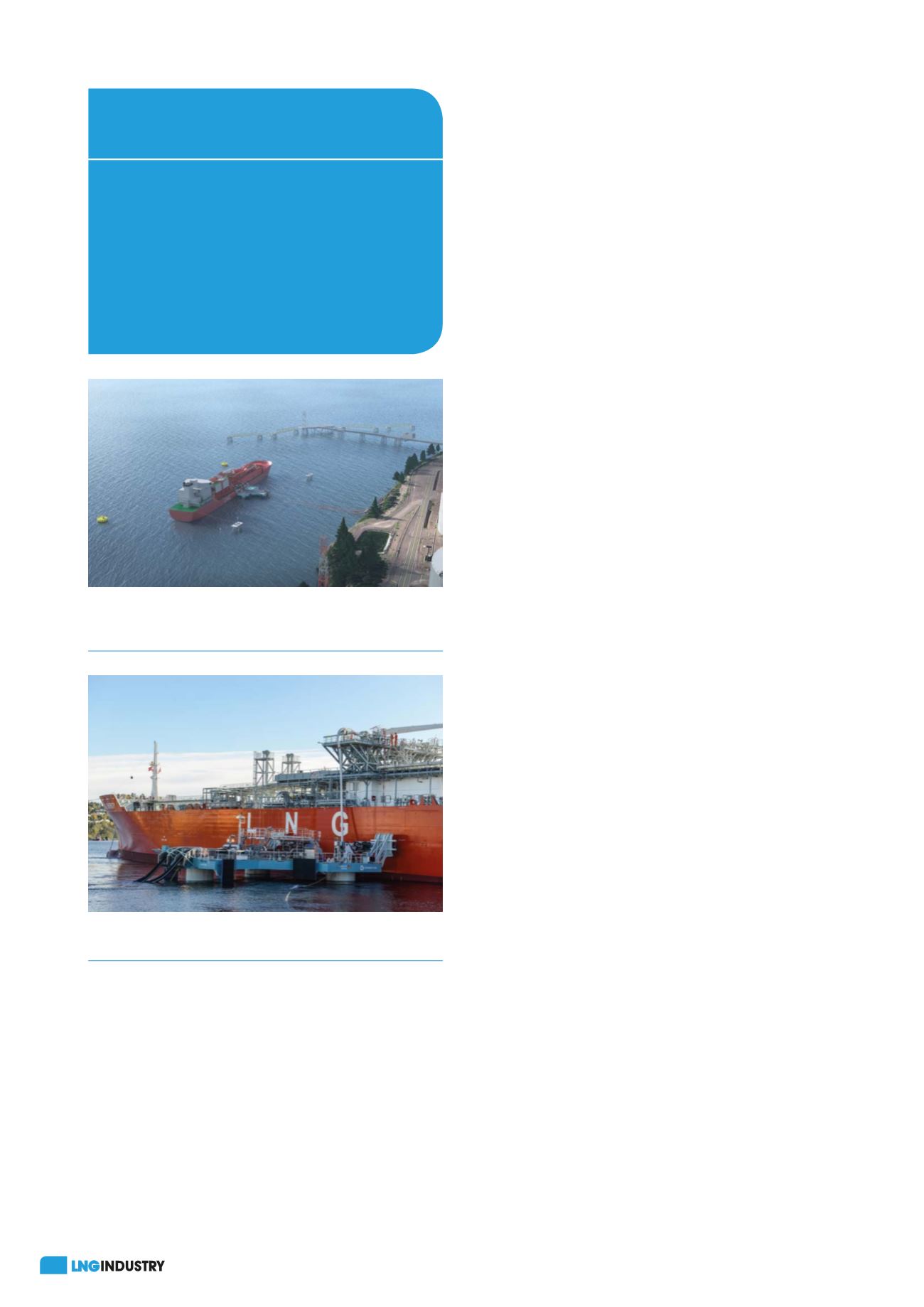
30
January 2020
accountable and transparent institutions. At industry level,
the SDGs provide the private sector with a lens through
which to translate global needs and ambitions into
business solutions across the value chain.
Small scale energy needs
The small scale LNG market is developing rapidly,
especially as a transportation fuel for vessels and heavy
road transport, in addition to serving power generation
in off-grid locations which are not connected to pipeline
infrastructures. The key drivers for investing in small scale
LNG are as follows:
z
Environmental: CO
2
, SO
x
, NO
x
and particulate
emissions control.
z
Geopolitical: prevention of country or regional market
dominance to ensure energy security.
z
Economic: on paper, large scale projects can seem
less attractive to the investor, demanding an upfront
commitment of billions of Euros.
Consequently, in the period from 2018 to 2023, the
small scale LNG market is expected to grow by 7.2% CAGR,
reaching a capacity of 324 million tpy in 2023. In
comparison, global LNG market demand in 2018 was
319 million tpy.
Reality shows us that the complexities around the
implementation of small scale LNG infrastructure are
numerous:
z
Technical feasibility: small scale LNG involves a
wide spectrum of technologies, from the storage of
cryogenic LNG onshore and offshore, to the connection
of regasification plants to existing domestic gas
transmission systems.
z
Long-term versus spot markets and LNG
competitiveness versus petroleum products: LNG
pricing mechanisms do not always represent the
regional fundamentals of LNG energy requirements.
z
Demand versus supply: growing energy needs
in developing countries will demand a domestic
infrastructure which, in some regions of the world,
simply does not exist today.
z
Stakeholders: coordination and collaboration across
different business sectors and governments is required
to optimise the system architecture, both at local and
national level.
z
Land ownership, availability and acquisition costs: land
has to be cleared to make way for small scale LNG
infrastructure, such as LNG storage and regasification
facilities, in addition to gas pipelines to different
end-users.
z
Baseload cargo volumes: small scale terminals
leverage on their bigger siblings in the large scale
space.
z
National regulation and legislation: mandatory
adoption of cleaner energy sources and frameworks
which catalyse action is complex and challenging to
navigate.
z
Return on investment (ROI): investment costs for
small scale LNG carriers are higher per tonne
compared to the cost for large scale LNG vessels.
There has to be consideration for a larger end-user
reach in order to increase investment attractiveness.
And the list goes on. Fortunately, Connect LNG’s
solution for jettyless LNG transfer, the Universal Transfer
System (UTS®), can help mitigate a number of these
obstacles. Connect LNG made the UTS the world’s first
floating jettyless LNG transfer system,
La Santa Maria
, a
reality in 2017. Since then, there has been a scurry of
industry players dipping their toes into the jettyless LNG
market, all recognising that end-users are crying out for
SDG7: Ensuring access to
affordable, reliable, sustainable
and modern energy for all
Achieving Sustainable Development Goal 7 (SDG7)
will benefit billions of people all over the world.
Universal access to energy, increased energy efficiency
and expanded use of renewable energy by 2030 will
result in enhanced economic opportunities and jobs,
empowerment of women and youth, better education
and health, and more sustainable, equitable and inclusive
communities. Access to clean energy would boost
protection from and resilience to climate change. The
question is ‘how do we get there?’
Figure 1.
Universal Transfer System (UTS®) for bunkering
of LNG, offering LNG terminals service flexibility and
additional revenue streams (Case B).
Figure 2.
UTS in operation mode. The unit is unmanned
during LNG transfer.








